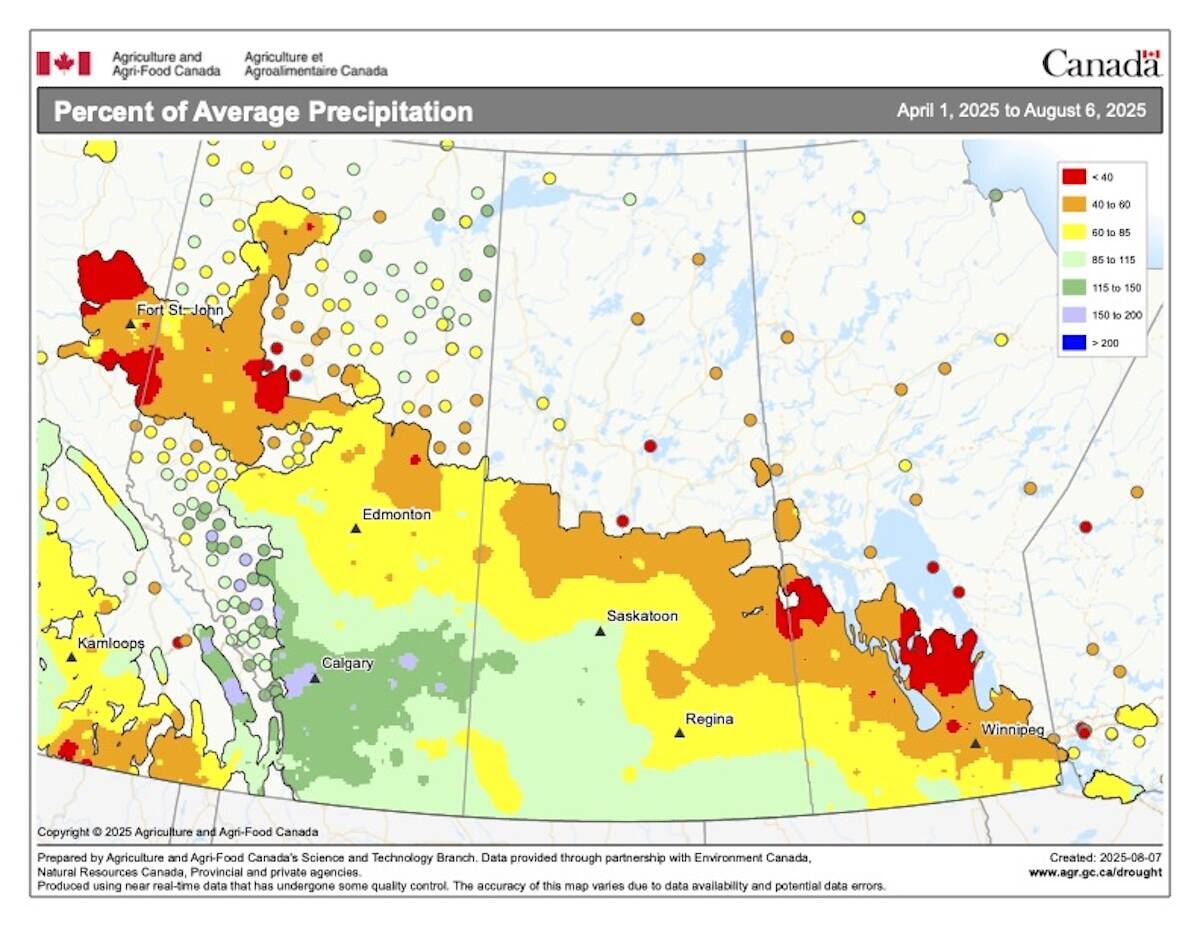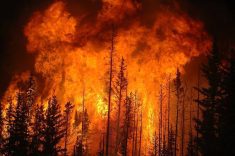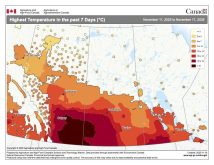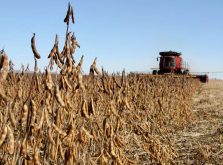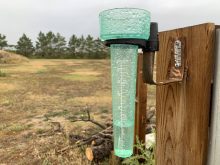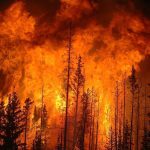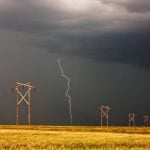In the last issue, I stated that we would begin our look at extreme rainfall, but I realized that we have not finished our look at heatwaves.
A couple of issues back, we discussed how we get large undulations of cold air sagging southwards from the North Pole (we are just talking about the Northern Hemisphere). These undulations create something called long waves and at any given moment there are usually three to six long waves circling our planet. These waves usually move steadily along giving us periodic shots of warm and cool air with unsettled conditions developing during the transitions. We also learned that sometimes these long waves can get stuck, and we refer to this as a blocking pattern.
So let’s continue our look at blocking patterns and heatwaves. But first I figured we should first define what a heat wave is, then look at the criteria that Environment Canada uses to define heat events.
Read Also
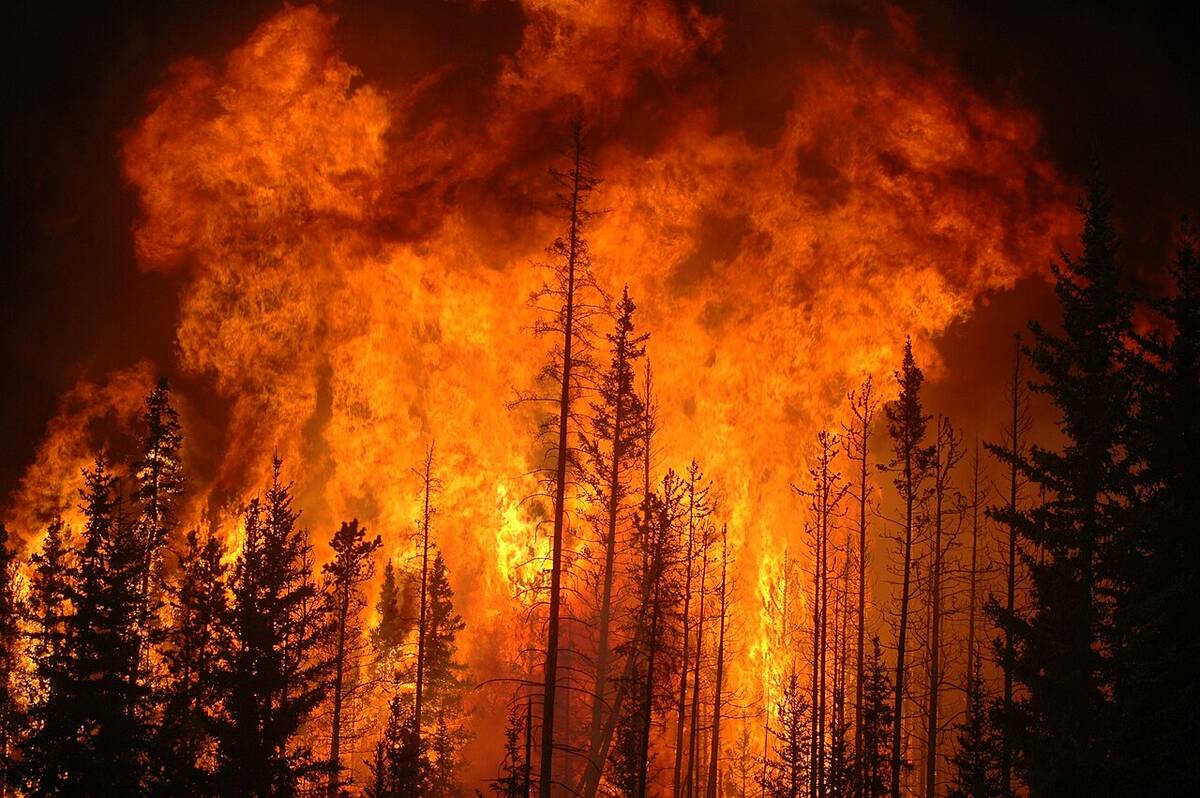
YEAR IN REVIEW: 2025 a year of weather extremes
Wildfires, drought and flash floods, oh my! Looking back at 2025’s headline-grabbing event in Canada and around the world.
Looking at several different definitions, I found a couple that were good: a generalized one and an official one from the World Meteorological Organization.
“A basic definition of a heat wave implies that it is an extended period of unusually high atmosphere-related heat stress, which causes temporary modifications in lifestyle and which may have adverse health consequences for the affected population.” – University of North Carolina at Chapel Hill, N.C.
“A heatwave occurs when the daily maximum temperature of more than five consecutive days exceeds the average maximum temperature of (five degrees Celsius), based on the normal climate of the region.” – WMO
These basically state that while a heat wave is a meteorological event (abnormally warm temperatures), it is the impact that the heat has on people that is key.
Heat warning thresholds
If you check Environment Canada’s website for a list of criteria for public weather alerts, you would find the following heat-related alerts for the Prairie provinces. In southern Manitoba and Saskatchewan, a heat warning or advisory is issued when two or more consecutive daytime maximum temperatures are expected to reach 32 C or warmer, and nighttime minimum temperatures are expected to remain at or above 16 C.
Or, when two or more consecutive days of humidex values are expected to reach 38 C or higher. In southern Alberta, it is the same criteria as southern Manitoba and Saskatchewan, but without the mention of humidex values as this region rarely sees high humidity.
Over more northern regions, the values in Manitoba are two or more days with daytime highs warmer than 29 C (and 16 C or warmer at night) or humidex values greater than 34 C. In northern Saskatchewan and Alberta, it is 29 C during the day and 14 C at night.
What causes a heat wave?
We now know the criteria, but what conditions need to come together to give us a heat wave? There are several different scenarios that can come together to give us conditions that will prompt a heat warning, but what I want to look at are the conditions that lead to not just a couple of days of heat, but the big heat waves that last for several days.
To get the long lasting, intense, record-breaking heat waves, a couple of meteorological events must come together. First, we usually need a blocking pattern to develop, and as I pointed out in the last issue, the most typical pattern is the Omega block. This pattern has upper-level lows sitting to our west and east with a ridge of high pressure in the middle. This is important because this pattern, as the name suggests, can become fairly stable and tend to sit in one place for several days allowing for temperature to build up.
The ridge of high pressure allows for a couple of things to happen. First, the descending air inhibits the growth of clouds. This in turn means plenty of sunshine, and in the summer, sunshine means heat. On their own, sunny skies do not mean a heat wave, we see plenty of sunny days in a row without experiencing a heat wave. The next part has to do with the strength of the high. When the high is strong we get very strong subsidence or sinking of air. As this air is pushed downwards, it hits the ground and is compressed. Now, anyone who has used an air compressor or even just a hand pump knows that as you compress air, you are forcing the air particles closer together, this in turn increases the rate of particle collisions, and these collisions transfer energy which we feel as heat. Don’t believe me? Grab a bike pump, give it 20 or so pumps and then feel the bottom of the pump, it’s hot due to the compression of air.
So, when there is a strong ridge of high pressure over us, the compression of sinking air can dramatically heat the air and give us some truly warm days. Now, if the upper high is not that warm, then all this compressing and heating of the air won’t do that much to give us record-breaking temperatures. If the upper high is warm to begin with, then this compression of air, combined with the additional heating of the sun, can really push the temperatures up. This is something we have seen over the last several years. We have been seeing some remarkable warm days even when the upper high has not been that strong. This is largely due to a generally warmer atmosphere. I’ve caught myself several times saying after a particularly hot day or two that the atmospheric setup should not have led to such warm temperatures.
So far this summer we have not seen strong blocking patterns develop, but that doesn’t mean it still can’t happen. In the next issue I promise we will begin out look at extreme rainfall events.


